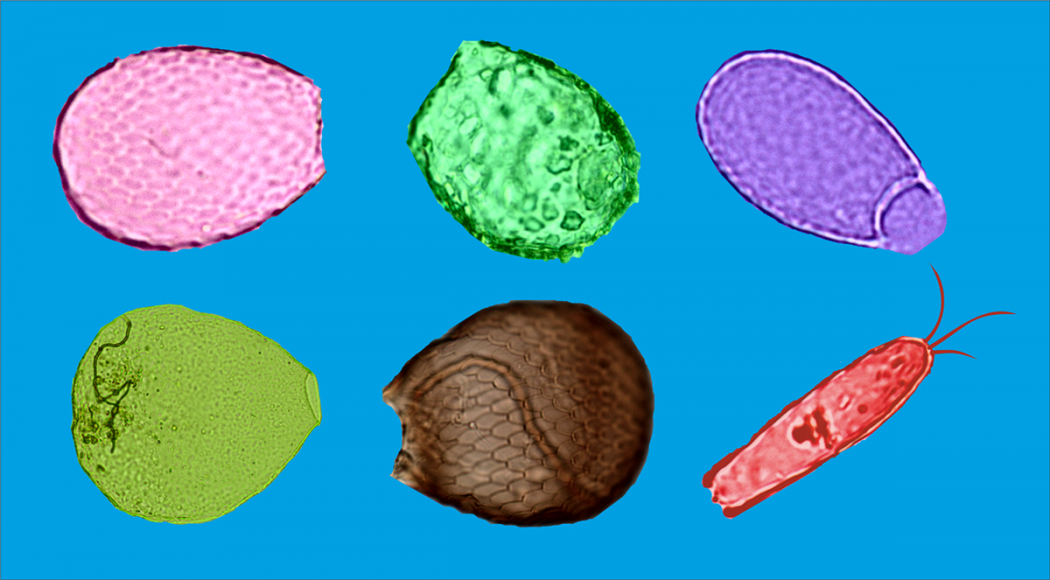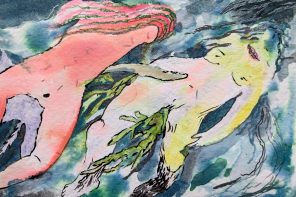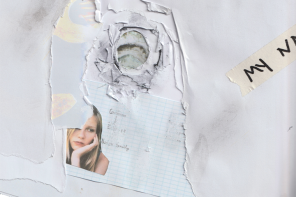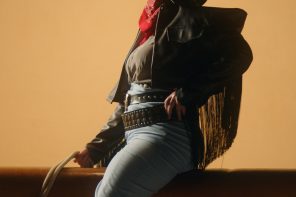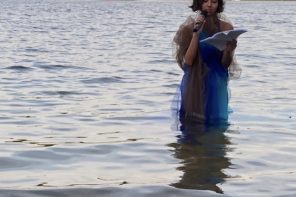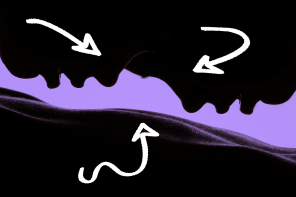Audio transcription:
You can be hammering nails into a wall without a care in the world, thinking how nice this Mona Lisa print is going to look just here above the sofa, how it’s going to catch the light very nicely indeed and – SNAP! The handle breaks. How do things change? You feel your mind fall onto the hammer, suddenly aware of it.
Or perhaps it’s 1950, the 8th of May, and you are cutting peat from your local fen.1 You hover at the edge of the bank, poised, and then come down with your weight through the spade, plunging it into the layers of partially-decomposed plants that have accumulated over thousands of years, planning how you will dry these slices out, how warm the winter evenings will be because of them, that smell… When suddenly you see a face staring up at you.
You no longer take where you are standing for granted. The peatland shocks you.
Change is possible because things have wiggle-room. Their potential is outrageous. This firm wooden thing in my hand is a hammer, this earth I am standing on is fuel for my house… then shift, slide, snap, break and you are standing on a grave.
The shock when something sprouts different qualities is a brief sensation of its horrifying depths. How secretly it was this thing, too, all along.
How dare you not tell me you were a sacrificial burial site?
How dare you be simultaneous?
No matter how much we, or anything, think about, smell, taste, tickle, ask questions of, or experiment on a thing, its essence always ‘withdraws,’ leaving us guessing at all the ways it might appear later, or to someone else.2 Everything is ontologically excessive and therefore potentially surprising.
But things are real, despite being shy. It’s not only shifting appearances. I am standing on a peatland, not a humpback whale. We just can’t exactly point them out on a map. This microscopically precise replica of the Mona Lisa is a replica, not the Mona Lisa.
The qualities of a thing are different from what the thing is. The peatland tastes sour to the alder’s roots, but sourness is not the peatland. We only really acknowledge this difference when the qualities are not what we expect: we see a human face in the peat and suddenly the withdrawn peatland echoes its cavernous presence to us.
Metaphors play with this frayed loop. “The ground itself is kind, black butter.”3 The ground as we know it day-to-day (hard-ish, flat, maybe sometimes a bit wet, but definitely not something you would spread on toast) quakes and caves in under the surprising qualities of kindness and black butter (soft, smooth, homely, greasy, squelchy, disturbing).
So the mysterious, real ground receives unexpected qualities – as we said, things can do more than you think they can.
But! Someone wrote this line of poetry, and we are there too, reading it – and the real mysterious ground cannot be read or written down because it withdraws. And so we fall through the gap, getting drenched in kind, black butter and the tense reality of things not being what they seem.
The qualities of things bubble and burst from their depths, but their ripples swirl into one another. Peat hums like a cyborg with the overlapping vibrations of nuclear fallout, ancient pollen grains and footsteps. I can’t disentangle the kindness from the butteriness from the blackness from my own associations and experiences of these as they spill over and soak into the ‘ground.’
In our day-to-day lives we don’t like this ‘mess’ falling through the reinforced concrete roof above our heads.4 We like outside qualities to be outside and inside qualities to be inside. We like Nature over there and us watching the documentary on the sofa over here. We like water over there in that drainage-ditch and our crops just here in this field.
Unease at the leakiness of things sits at the foot of the destruction of the common world. The dualism spawned by the erection of such boundaries is why the exploitation of ‘Nature’ as ‘resource’ by ‘Humanity’ is conscionable.
*
Seamus Heaney’s association with peatlands is usually through his bog-body poems, which draw parallels between the violence of The Troubles and the Iron Age. However, Heaney’s first two poetry collections focus on his childhood in the peatland-scape of County Derry. He describes the process of writing these poems as “like reaching into another world, even though it was a world I had experienced.”5
The paradox of creating new worlds that we have experienced is a political project of improvising an inhabitable, creative future out of the scraps we have to hand. A wade into peat and poems might turn up a few to get us going.
In Poem (for Marie) the child decides “to build the wall/ That was to keep out” the farm animals he grew up with, but “Yearly, admitting these, the sods would fall.” With his unpractised hand the walls crumble and the outside leaks in. But the unsuccessful wall does not perturb the child much, as long as they get to go “puddling through muck in a deep drain” again. Demarcation is a pretence to play in the mud. Each year the child goes through this process and each year it fails, but still “In the sucking clabber I would splash/ Delightedly.”
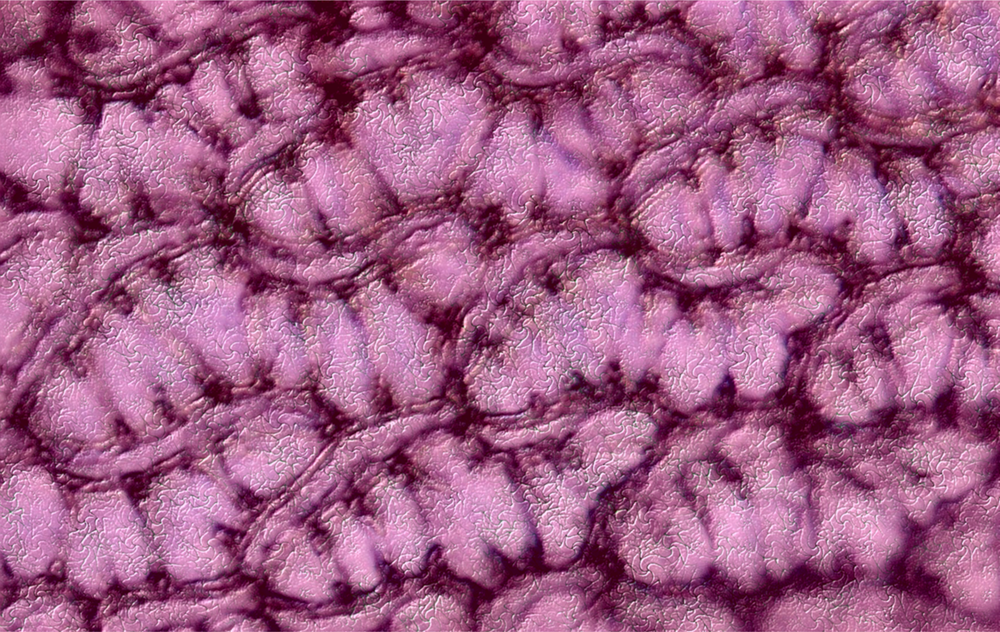
In the final stanza, Heaney hopes that the adult institution of marriage will “arrange the world/ And square the circle”, but with that phrasing acknowledges the impossibility of such a task. Where others put faith in the four solid walls of adult life, Heaney knows that these “imperfect limits would keep breaking.” He says in Personal Helicon, “Now to pry into roots, to finger slime,/ To stare big-eyed Narcissus, into some spring/ Is beneath all adult dignity.” The imperfect limit between air and earth breaks, along with adult dignity, when the boundary of the ground is tunnelled through by “wells” in which you can see “the trapped sky.”
The sky beneath you, underground. The qualities of one defined layer spilling unstoppably into those of the opposing layer, with you caught in the middle, losing your sense of self amongst “the smells/ Of waterweed, fungus and dank moss.” The well was “So deep you saw no reflection in it.”
“I rhyme/ To see myself, to set the darkness echoing,” Heaney says. Through the well of poetry one can engage with the sloppy, de-limited reality of the world, as well as the echoing withdrawnness of it. Poetry as a “door into the dark” accepts the surprises that things are capable of. While his family are farmers, digging with “curt cuts” into the earth for peat, Heaney digs with his pen for shapeshifters, “a dig for finds that end up being plants.”
Poems draw together disparate, improbable objects and let them spill over one another. From my earliest English lessons I learnt that poems are ambiguous, and have many interpretations. They exist differently to every reader, and are different to the same reader on separate occasions. Acknowledging this takes us one step closer to acknowledging that other things can exist in multiple mysterious ways at the same time. Philosopher Timothy Morton says, “With remorseless gentleness, a poem forces us to acknowledge that we coexist with uncanny beings in a groundless yet vivid reality without a beyond.”6
In poems things can exist together, and collectively have potential for myriad different ways of existing.
As hopeful as this may sound, in Undine Heaney contorts the poem-beings in an act of self-serving paternalism. He explains the mythology: “An undine is a water-sprite who has to marry a human being and have a child by him before she can become human.”7 What follows is an account of a man unblocking a drainage channel, told from the point of view of the water, “a cold girl who got what the dictionary called a soul through the experience of physical love.”8 Undine fawningly gives herself to the violent man: “he dug a spade deep in my flank/ And took me to him. I swallowed his trench//Gratefully, dispersing myself for love.” We are left with the idea that Undine is thankful to have lost her “cold freedom” as she, now “Human, warmed to him.”
Despite being told from the water’s perspective, the poem is anthropocentric. It is only this human man that has the power to make Undine real or valued. Heaney says the poem came from “the almost unnameable energies that […] hovered over certain bits of language and landscape,”9 but the poem ends up being exactly the restriction of the “unnameable energies” latent in the water.
Water is real and valued through interaction with any being. The water of the bog can encounter the hyaline cells of Sphagnum or the stony toes of a curlew with as much love as any person. Being available to all these interactions, the water retains the “cold freedom” of every unpredictable future.
Undine is “about the way water is tamed and humanized when streams become irrigation canals, when water becomes involved with seed.”10 The taming of water when peatlands are drained is damaging in the extreme, emitting CO2 and harming biodiversity. Instead of giving Undine “right of way in my own drains,” we can give her, and all bodies of water, the right of way over the whole peatland. Let water drench and spread the peatland’s ambiguity, the “unnameable energies,” for all human and nonhuman beings. Futures are plants that come from bursting ditches and quaking earths. Things change when they are wet.
Words by Jamie Walker
Images by Luke Andrews
Jamie Walker is an undergraduate biologist at the University of Oxford. He is a member of the youth-led collective Re-Peat, which is pushing for a paradigm shift over how we perceive and value peatlands. He can be found on twitter @jamie__walks.
Luke Andrews is a PhD student looking at past and future effects of climate change on peatland carbon cycling and feedbacks and also a member of Re-Peat. He can be found on twitter @peatblogger.
1 PV Glob (1971), “The Bog People” Paladin.
2 Graham Harman (2018), “Object-Oriented Ontology: A New Theory of Everything” Penguin, London.
3 Seamus Heaney (1998), Bogland (1969) from “Opened Ground – Poems 1966-1996” Faber, London.
4 Timothy Morton (2018) “Being Ecological” Penguin, London.
5 Seamus Heaney interview (1980) on Afternoon Plus www.youtube.com/watch?v=3yt4m2Z4Pmw&ab_channel=ThamesTv.
6 Timothy Morton, (2012) “An Object-Oriented Defence of Poetry” New Literary History, 43(2), 205-224.
7 Seamus Heaney (1974), Words into Feeling, from “Preoccupations – Selected Prose 1968-78”, Faber, London.
8 Ibid.
9 Ibid.
10 Ibid.

